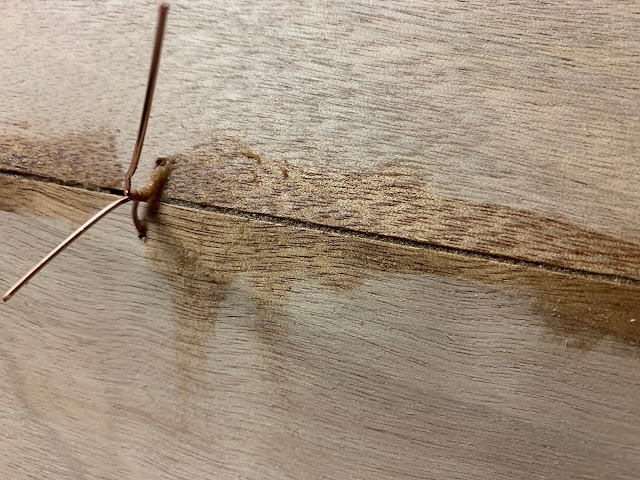Just a quick update... I was able to pull the wires from the CLC Expedition Wherry.
The wires that held the panels together came out easily. Just snip the inside bit and pull from the outside and they will come right out.
The wires on the transom, bow, and bulkheads though were harder to pull. The bulkhead wires eventually came out with some persuasion. I found that I had to snip both sides of the bulkhead wires and then pull out the two outside wires separately and then the inside bit that ran through the bulkhead. Wasn't too bad but took time.
I started with the transom though and wish now that I had learned a trick that I would figure on on the bow. I ended up leaving some wires in the transom. They will not be seen, but I now know that I could have easily gotten them out.
NEAT WIRE PULLING TRICK: IF you have a wire that is stuck in hardened epoxy, you can usually get it out by doing this. 1) Snip the wire on the outside close to the hull be leave an 1/8th of an inch or so on both sides. 2) Hold a soldering iron/gun onto the end of the snipped wire for just a few seconds until the heat is transferred through the wire and softens the epoxy. 3) Easily pull the wire with some pliers. TA DA!
Just don't burn the wood or hold the iron too long. You only want to soften the epoxy just around the outside of the wire enough to pull it and not to soften a large amount of epoxy.
Here is how my outside seams looked before pulling the wires.
Here is a picture of the bow after pulling the wires using heat. You can see that in one hole I used just a touch too much heat and slightly scorched the hole. No big deal, it will sand out easily. But just be careful. The bow wires all came out nicely.
The next thing I did was to add thickened epoxy to the bow. The manual later says that you should sand the bow to make a nicely rounded front. I'm taking a trick from Pygmy Boats and using thickened epoxy here instead of showing the bare wood. It will be an added bit of protection as it's harder than wood. If it gets chipped it will be easier to repair than wood. And finally, it's easy to shape with a rasp and sandpaper. The epoxy tape will easily wrap around it.
Note that in the pictures below the bow epoxy has only been added... it has not been shaped yet! It will look much nicer once it has cured and is shaped.
More later,
Aloha!




Comments
Post a Comment